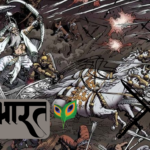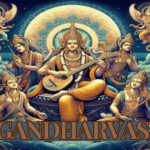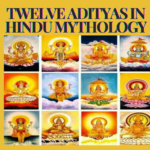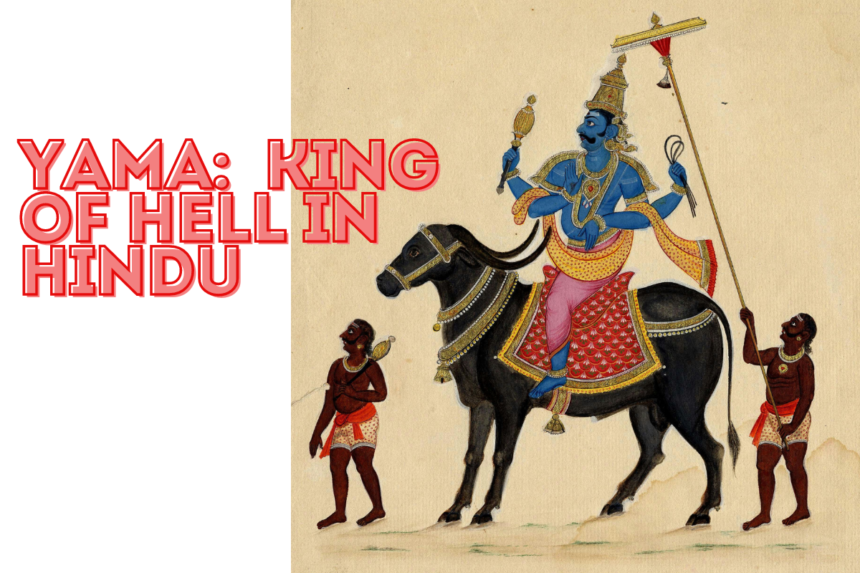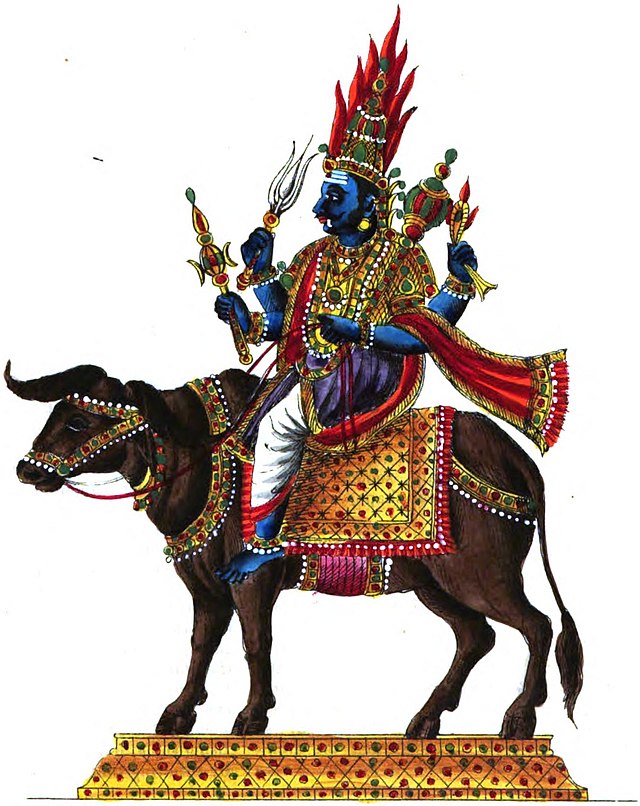Yama, the Hindu god of death and justice, is one of the most fascinating and complex figures in Hindu mythology. As the first mortal to die, Yama became the ruler of the afterlife, overseeing the fate of souls and ensuring that cosmic order is maintained. This article delves into Yama’s origins, his depiction in various texts, his role in Hinduism and other religions, and his enduring influence in modern culture . He is often refrred Yama as the king of hell in hindu mythology.
Origins and Early Depictions
The First Mortal
Yama’s story begins with his unique status as the first mortal to die. According to Hindu mythology, Yama was the first being to pass from the earthly realm to the afterlife, thus opening the path for all other souls to follow. This pioneering journey granted him the position of lord of the dead, a role that comes with immense responsibility and power.
Appearance and Symbols
Yama is often depicted riding a buffalo, a powerful and formidable animal that symbolizes his control over death and the afterlife. He carries a noose, which he uses to capture the souls of the deceased, ensuring they are brought to his realm for judgment. In some depictions, Yama is shown with a mace or a sword, tools that signify his authority and his role in enforcing justice and punishment.
His appearance is designed to be both awe-inspiring and somewhat intimidating. Yama’s visage reflects his role as a stern judge who administers the law without bias. This duality of being both a guide and an enforcer is central to understanding Yama’s character and his place in Hindu cosmology.
Yama in Hindu Texts
Rigveda and Upanishads
Yama’s earliest mentions are found in the Rigveda, one of the oldest and most important texts in Hinduism. In these hymns, Yama is portrayed as a noble figure who resides in the realm of the ancestors, welcoming the souls of the departed. He is depicted as a wise and just ruler, ensuring that the dead are treated with respect and that their journey to the afterlife is orderly.
The Upanishads, which are philosophical texts that explore the nature of reality and the self, further elaborate on Yama’s role. In these texts, Yama is often portrayed as a teacher who imparts wisdom to those seeking understanding of life and death. His conversations with seekers, such as the famous dialogue with Nachiketa in the Katha Upanishad, provide deep insights into the nature of the soul, karma, and the afterlife.
Mahabharata and Puranas
Yama’s character is richly developed in the Mahabharata, one of the great Indian epics. In this vast narrative, Yama appears in various stories that highlight his multifaceted nature. He is shown as a stern judge who ensures that the moral order is upheld, but also as a compassionate figure who understands the complexities of human life and actions.
The Puranas, which are collections of myths and legends, offer detailed accounts of Yama’s duties and his realm. They describe his court, where souls are brought for judgment, and the various punishments or rewards that are meted out based on one’s deeds. These texts provide a vivid picture of Yama’s kingdom and his crucial role in maintaining cosmic balance.
The Role of Yama in Hinduism
Judge of the Dead
Yama’s primary role in Hinduism is to judge the souls of the deceased. When a person dies, their soul is brought before Yama, who reviews their actions during their lifetime. This process is guided by the principle of karma, which holds that every action has consequences. Good deeds lead to positive outcomes, while bad deeds result in negative repercussions.
Yama’s judgment determines the fate of the soul. Those who have led virtuous lives are rewarded, often with a favorable rebirth or a place in the heavenly realms. Conversely, those who have committed sins face punishment, which can range from suffering in hellish realms to difficult rebirths. This system ensures that moral order is upheld and that justice is served.
Maintainer of Cosmic Balance
Beyond his role as a judge, Yama is also seen as a maintainer of cosmic balance. In Hindu cosmology, the universe operates according to a delicate balance of forces, and Yama’s role is crucial in ensuring that this balance is preserved. By administering justice and overseeing the afterlife, Yama helps to maintain harmony in the cosmos.
Yama’s influence extends to the living as well. His presence serves as a reminder of the consequences of one’s actions, encouraging people to live righteous lives. This moral guidance is a key aspect of Yama’s role and highlights his importance in the broader context of Hindu philosophy and ethics.
Yama in Other Religions
Buddhism
Yama’s influence is not limited to Hinduism. He also appears in Buddhist mythology, where he is known as Yama Raja. In this context, Yama serves a similar role as the judge of the dead, overseeing the karmic consequences of one’s actions and ensuring that justice is administered.
In Buddhist texts, Yama’s realm is described as one of the six realms of existence. Souls are brought before him to be judged based on their karma, and their future rebirths are determined accordingly. This emphasis on karma and the moral order underscores the continuity between Hindu and Buddhist beliefs regarding the afterlife and the role of Yama.
Chinese and Tibetan Mythology
Yama’s character has also been incorporated into Chinese and Tibetan mythology. In these traditions, he is often known as King Yan or Yan Wang, the ruler of the underworld. Similar to his role in Hinduism and Buddhism, King Yan judges the souls of the deceased and ensures that justice is served.
In Chinese mythology, King Yan is often depicted with a stern and authoritative demeanor, reflecting his role as a judge and enforcer of moral order. Tibetan Buddhism also features Yama, where he is known as Shinje, the lord of death. In this context, Yama is seen as a fierce protector of the dharma, the moral law, and a guide for souls on their journey through the afterlife.
Korean and Japanese Mythology
Yama’s presence is also felt in Korean and Japanese mythology. In Korea, he is known as Yeomna, the king of the underworld. Similar to his counterparts in other cultures, Yeomna judges the souls of the dead and ensures that their karmic consequences are appropriately addressed.
In Japanese mythology, Yama is known as Enma, the ruler of the underworld. Enma’s role is to judge the souls of the deceased and determine their fate based on their actions. This cross-cultural presence of Yama underscores his universal significance as a symbol of justice and moral order.
Yama’s Enduring Influence
Cultural Representations
Yama’s influence extends beyond religious texts and mythology. He is a prominent figure in various cultural representations, including art, literature, and theater. In traditional Indian art, Yama is often depicted in vivid and powerful imagery, highlighting his role as a judge and ruler of the dead.
Literature and theater also explore Yama’s character, offering different interpretations of his role and significance. These cultural representations help to keep Yama’s story and his moral teachings alive, ensuring that his legacy continues to resonate with people.
Modern Relevance
In contemporary India, Yama’s image is often used in public safety campaigns. For example, traffic safety campaigns may feature Yama as a reminder of the consequences of reckless driving. This use of Yama’s image highlights his role as a moral guide and enforcer of justice, emphasizing the importance of responsible behavior.
Yama’s story also serves as a reminder of the inevitability of death and the importance of living a virtuous life. His teachings about karma and moral order continue to be relevant in today’s world, providing valuable insights into the nature of justice and the consequences of one’s actions.
FAQs
who is king of hell in hindu mythology?
Yama is considered as king of hell according to hindu mythology
Yama, the Hindu god of death and justice, is a complex and multifaceted figure who plays a crucial role in Hindu cosmology. As the first mortal to die, Yama became the ruler of the afterlife, overseeing the fate of souls and ensuring that cosmic order is maintained. His role as a judge and maintainer of balance underscores his importance in Hindu philosophy and ethics.
Yama’s influence extends beyond Hinduism, appearing in Buddhist, Chinese, Tibetan, Korean, and Japanese mythology as a symbol of justice and moral order. His enduring presence in cultural representations and modern society highlights the continued relevance of his teachings and the universal significance of his character.
By understanding Yama’s story and his role in various traditions, we gain valuable insights into the nature of justice, the afterlife, and the moral order that governs our actions. Yama’s legacy reminds us of the importance of living a virtuous life and the consequences of our deeds, ensuring that his teachings continue to resonate across time and cultures.


